Polygons pendants combine computer modelling with Czech glass cutting
Milan 2015: these crystal-shaped lamps by Prague duo Jan Plecháč and Henry Wielgus were designed with 3D-modelling software but made using traditional Czech glass-cutting techniques.
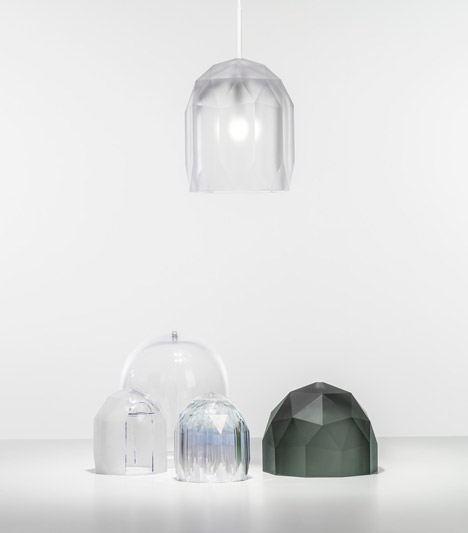
The glass pendants, which feature a series of hexagonal and triangular facets, form Plecháč and Wielgus' third collection for lighting manufacturer Lasvit.
The shades are hand-blown then hand-cut in the Czech Republic and are available in a palette of pastel shades.
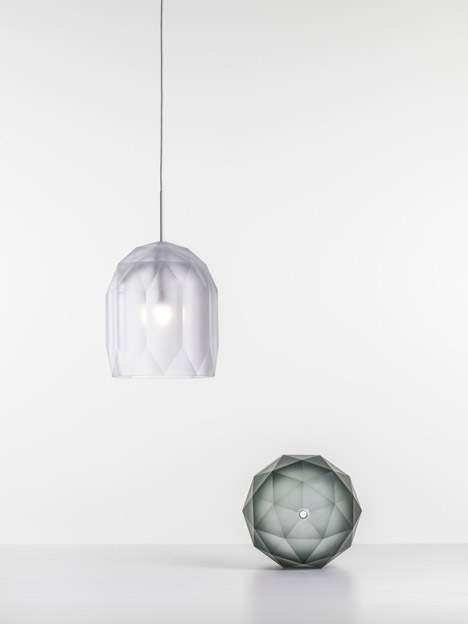
"We have been long fascinated by glass-cutting techniques but we wanted to make a new pattern," Plecháč told Dezeen. "There are just a few patterns which have been used for ages, so we have tried to find a new way of shaping the glass."
"We did a little research and found that it would be very interesting to use a new technique – 3D modelling – and combine it with old cutting," he added. "We tried to place this classic craft technique in a current context."
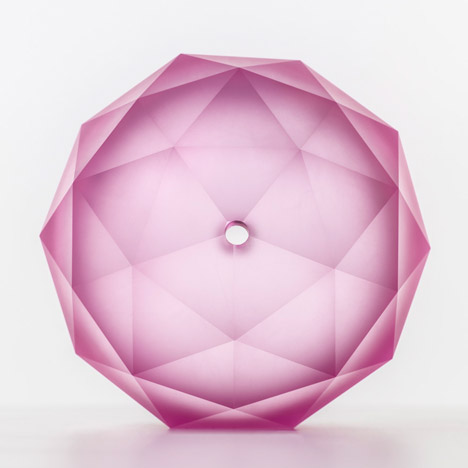
The shape of the pendants was created using "low-poly objects" – a basic shaping tool in most computer-modelling programs.
"Normally we use a computer for our modelling and rendering, and low-poly objects are part of that," Plecháč explained. "Low-poly objects are just a shortcut for very difficult [in terms of computer memory] high-polygon objects, but they are also very beautiful objects in their own right and, from some points of view, very new."
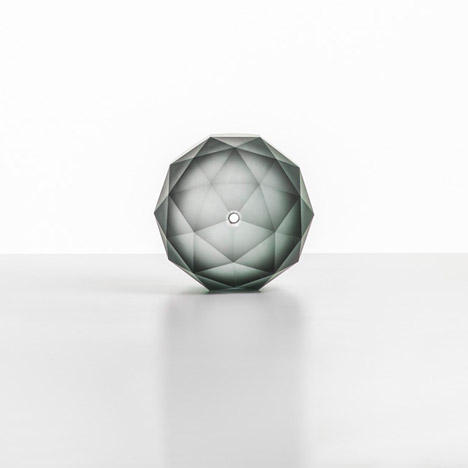
The pair chose colours rarely used in traditional Czech glass-blowing. The typical amber hue was replaced with a lighter shade the designers have named Champagne.
"We have used unusual intensities or combinations of colours and two are particularly special – the Rose and the Olive," Plecháč said. Other colours include Crystal and Smoke.
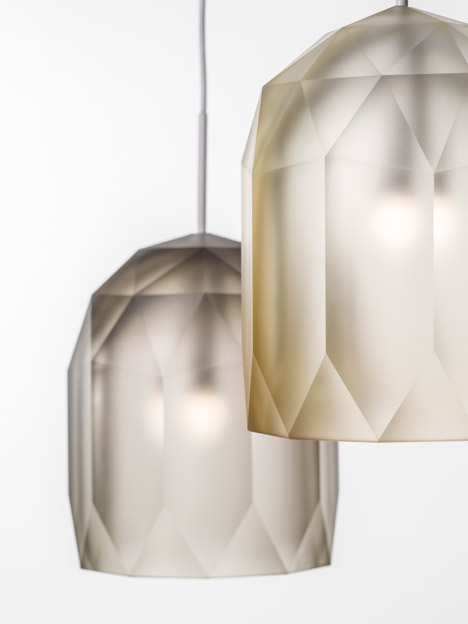
Polygons were shown at both Spazio Rossana Orlandi and the Euroluce lighting exhibition at the Salone del Mobile in Milan last week.
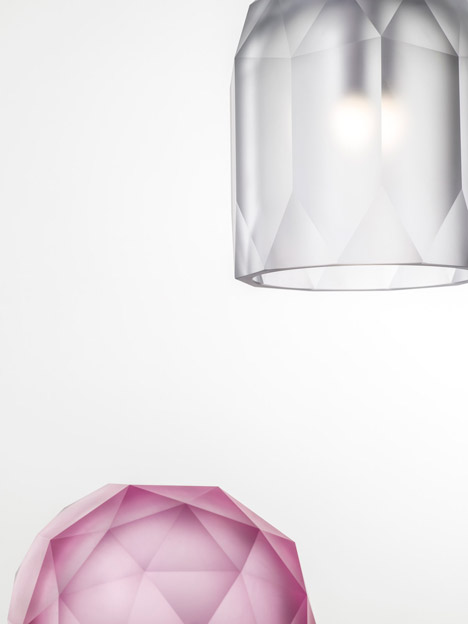
Lasvit also debuted a series of balloon-shaped lights by Maarten Baas at the event, which concluded on Sunday.